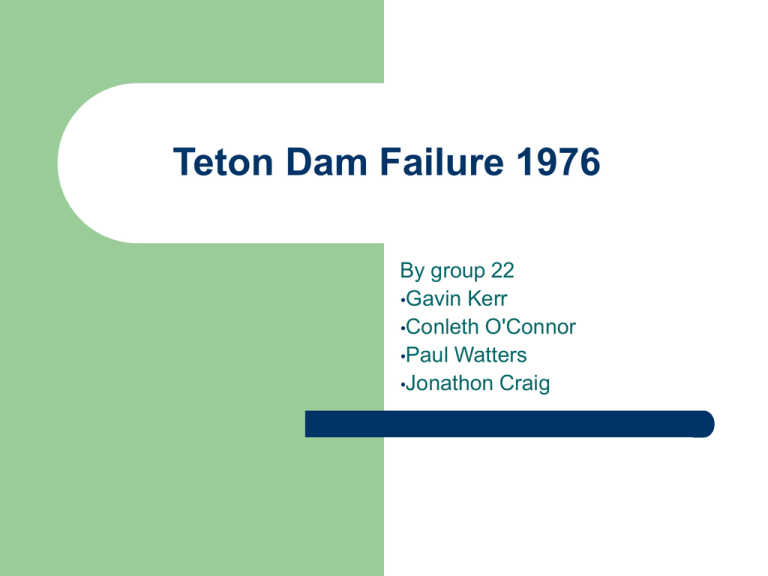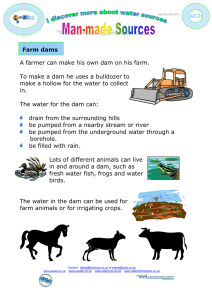Teton Dam Failure 1976_Group 22.ppt
advertisement

Teton Dam Failure 1976 By group 22 •Gavin Kerr •Conleth O'Connor •Paul Watters •Jonathon Craig Introduction The Teton Dam was designed and built as a multi-purpose reservoir. It was to provide • Irrigation • Water • Flood prevention • Electricity • Recreational water facility The Design The Dam was 97m deep and 975m wide which enclosed a reservoir which spread back for 27km. The central core was composed of • Sand • Silt • Clay • Gravel • Cobbles Which engineers believed to be impervious to water. The core was protected by layers of overlying rock What happened? The dam collapsed on the 5th June 1976 when the reservoir was approaching full capacity. Although two days previous to this, engineers had noticed springs in the right abutment downstream from the dam. What happened? Observers noticed a wet patch that morning on the downstream face of the dam This wet patch soon turned into seepage and surface materials began to collapse As the reservoir grew, so did the hole and eventually the crest of the embankment fell through and the water surged through the gap How did it happen The rock used in the presumed to be impervious core contained small faults that weren’t deemed to be large enough to cause any problems As the water behind the dam increased, the greater pressure created, forced these small faults to open and allowed for the seepage which incurred The main causes Unfortunately rash and unwise governmental and political decisions were deemed the driving force behind the dams failure Senators seeking re-election believed by providing such a huge water reserve, it would boost their chances of returning to office Causes… Politicians overstated benefits and understated costs which led to vital areas of the dam construction being overlooked Bureaucracy played a huge part in hurrying the project along before and during construction However… Ultimately it was decided it was the fault of the design team Geologists testified that poor site selection and inadequate approach to design and construction led to the failure High permeability, porosity and frailty of the material under the dam greatly contributed to the failure of the tetra dam Lessons learned It was decided that for successful dam construction changes needed to be made • Peer review studies for dams • Ensuring redundant measures to control seepage and piping • Special treatment for fractured rock foundations • And finally frequent site visits during construction by the design engineers 28/10/04 Thank you!!!!!!!!!!!!!!!!!




